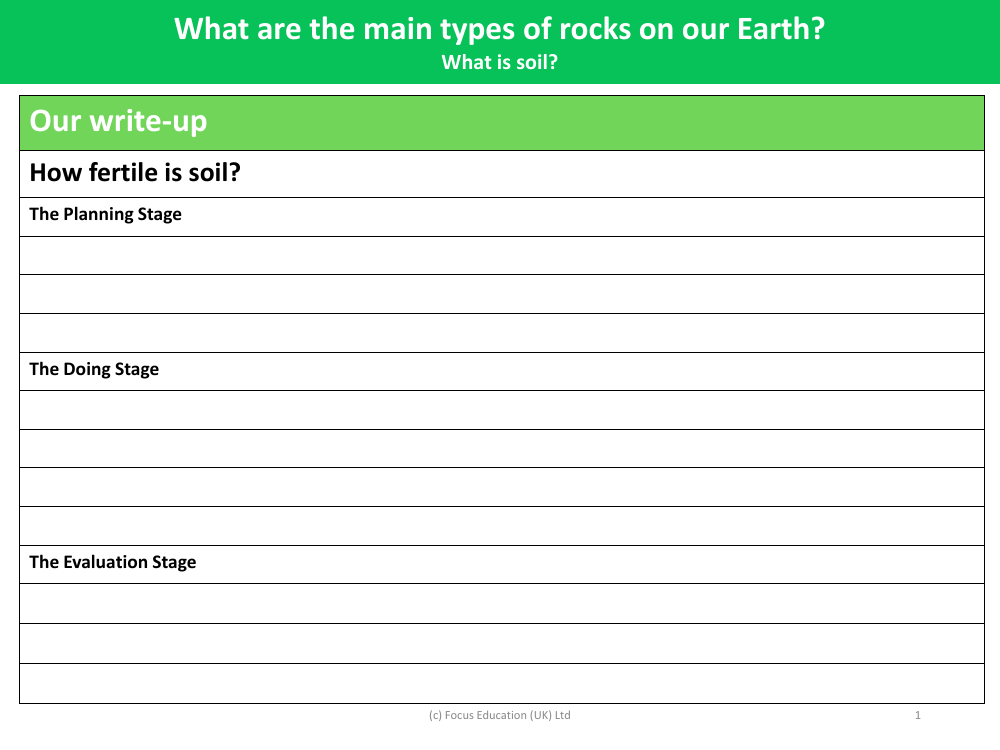How fertile is soil? - Write up

Science Resource Description
When assessing the fertility of soil, it's crucial to consider the stages of the evaluation process. Initially, in the Planning Stage, one must determine the goals and methods for assessing soil fertility. This could involve deciding which nutrients and soil properties will be measured and what tests are necessary to gain an accurate understanding of the soil's condition. The Doing Stage is the practical phase, where soil samples are collected and analyzed using the chosen methods. This might include testing for nitrogen, phosphorus, potassium levels, pH balance, and other essential elements that contribute to soil fertility.
Following the practical analysis, the Evaluation Stage involves interpreting the results of the tests. This stage is critical for understanding the soil's potential for supporting plant growth and for making recommendations for improvement if necessary. Alongside these stages, it's also important to consider the fundamental components of soil, which are derived from various types of rocks on Earth. Soil itself is a complex mixture of minerals, organic matter, gases, liquids, and countless organisms that together support life. The fertility of soil is inherently tied to its origin, composition, and the ongoing processes that continue to shape it over time.





